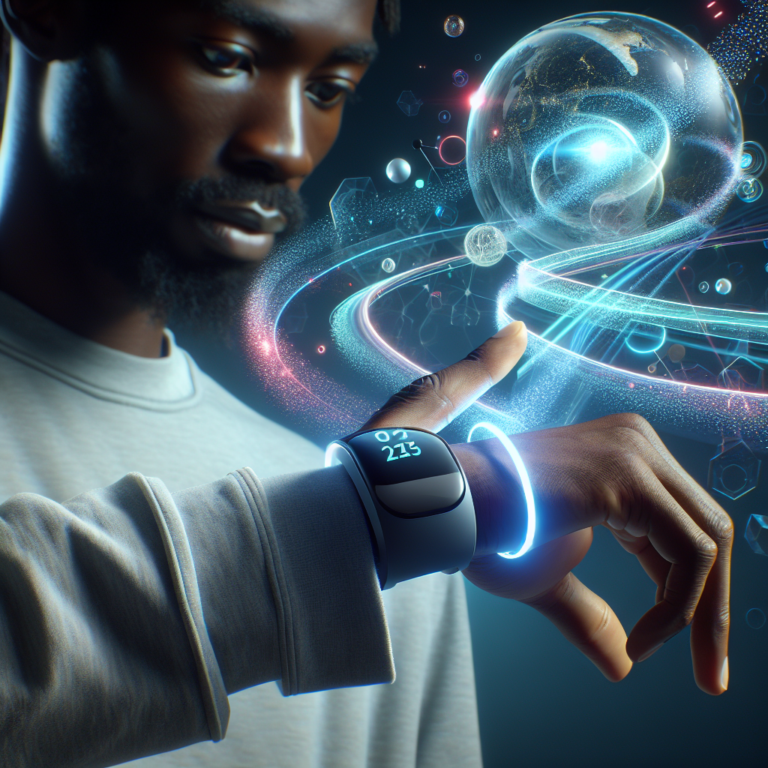Mudra Link: The Revolutionary $200 Neural Wristband for All Your Devices
Overview of the Neural Wristband – Mudra Link
At CES 2025, the Neural Wristband, known as Mudra Link, made a splash as an innovative technology, designed to enhance user experiences across various devices. Priced affordably at just $200, this device promises to elevate interaction, connecting seamlessly with everything you use daily.
Real-Time Interaction Using Hand Gestures
During a live demo, I had the chance to dive into the capabilities of the Neural Wristband. As I tried out different hand gestures, I observed a live visualization of the neural signals relaying from my wrist to my fingers, displayed prominently on a screen. When I repeated particular gestures, the visual patterns remained consistent. However, an interesting observation occurred when a company representative moved my finger; there were no signals captured to reflect the gestures I previously made.
Advanced Sensor Technology in the Neural Wristband
Mudra Link features groundbreaking Surface Nerve Conducting (SNC) sensors, which utilize technology akin to Meta’s sEMG (Surface Electromyography). This allows it to detect electrical signals traveling from the wrist to hand muscles, making it possible to recognize finger movements without traditional optical tracking methods. This significant innovation opens new doors for how users interact with their technology.
Dual-Band Input Possibilities
A standout feature discussed by Mudra Link representatives involves the potential use of two neural wristbands, one designated for mouse operations and the other for keyboard input. While I couldn’t test this feature myself, the idea hints at a fascinating future. Imagine integrating dual-band inputs into operating systems, thereby enhancing haptic feedback based on specific gestures and transforming device interaction.
Pressure Detection Features of the Neural Wristband
Another remarkable capability I encountered was the wristband’s ability to gauge pressure levels. Unlike conventional input systems, which often only recognize contact from fingers, the Mudra Link wristband measures the intensity of the pressure applied. As I squeezed my fingers together, a visual gauge filled up, demonstrating the incredible potential this feature could unleash.
Compatibility with AR Devices
During the demonstration, a representative showcased how the Neural Wristband works seamlessly with TCL’s RayNeo X3 Pro AR glasses. The demo illustrated how the wristband could be utilized for menu navigation, highlighting its immense potential in augmented reality scenarios.
Pricing and Availability of Mudra Link
The price tag for the Neural Wristband, or Mudra Link, stands at $199, with shipping slated for the near future. This presents a great opportunity for tech enthusiasts eager to explore this innovative device and its capabilities.
Technical Specifications of the Neural Wristband
The excitement surrounding innovative wristbands like the Mudra Link stems from their potential to offer advanced input across numerous glasses and headsets. Designed with impressive features, including:
- Exact control for various applications
- Pressure detection abilities for nuanced interactions
- Broad compatibility with AR and XR devices
These attributes suggest that the Neural Wristband could significantly reshape how we engage with augmented and virtual environments alongside nearby devices.
Insights from the Demo Experience
While the live demonstration illustrated the promising and exciting potential of the Mudra Link technology, it wasn’t without its hurdles. Since the system relies heavily on Bluetooth, interference during CES affected the consistency of the experience. Furthermore, the limited demo time raised questions about the device’s effectiveness in real-world scenarios.
What’s Next for the Neural Wristband?
We eagerly anticipate acquiring a unit for comprehensive testing, so we can better explore its use cases, reliability, and overall performance. In the meantime, developments from Mudra Link and similar wearable XR technologies are certainly worth monitoring as they could soon revolutionize how we interact with our technological environment.




0 Comments